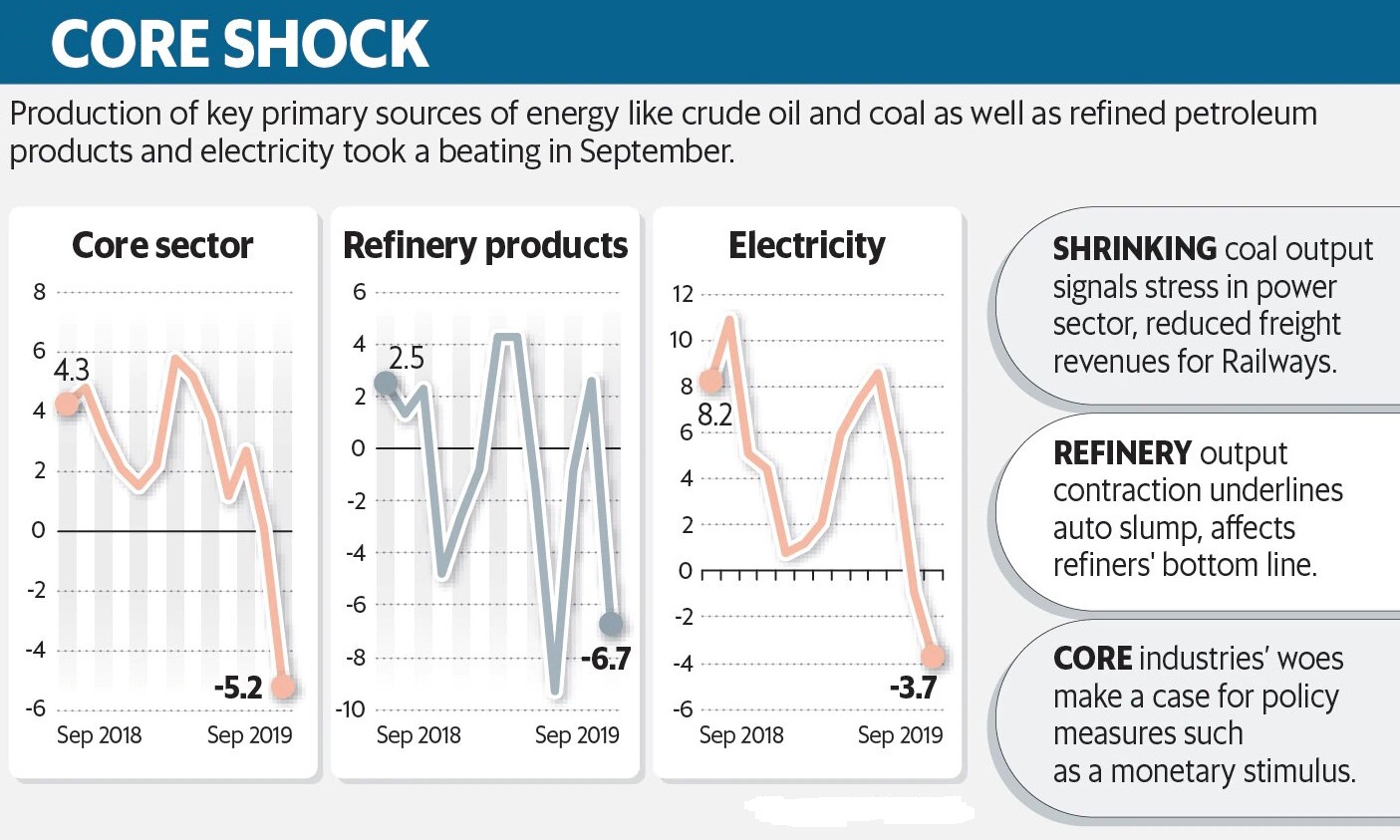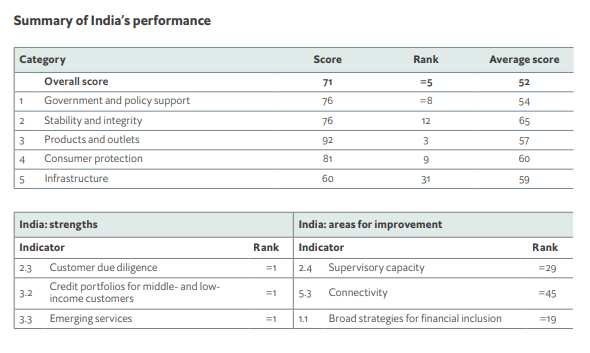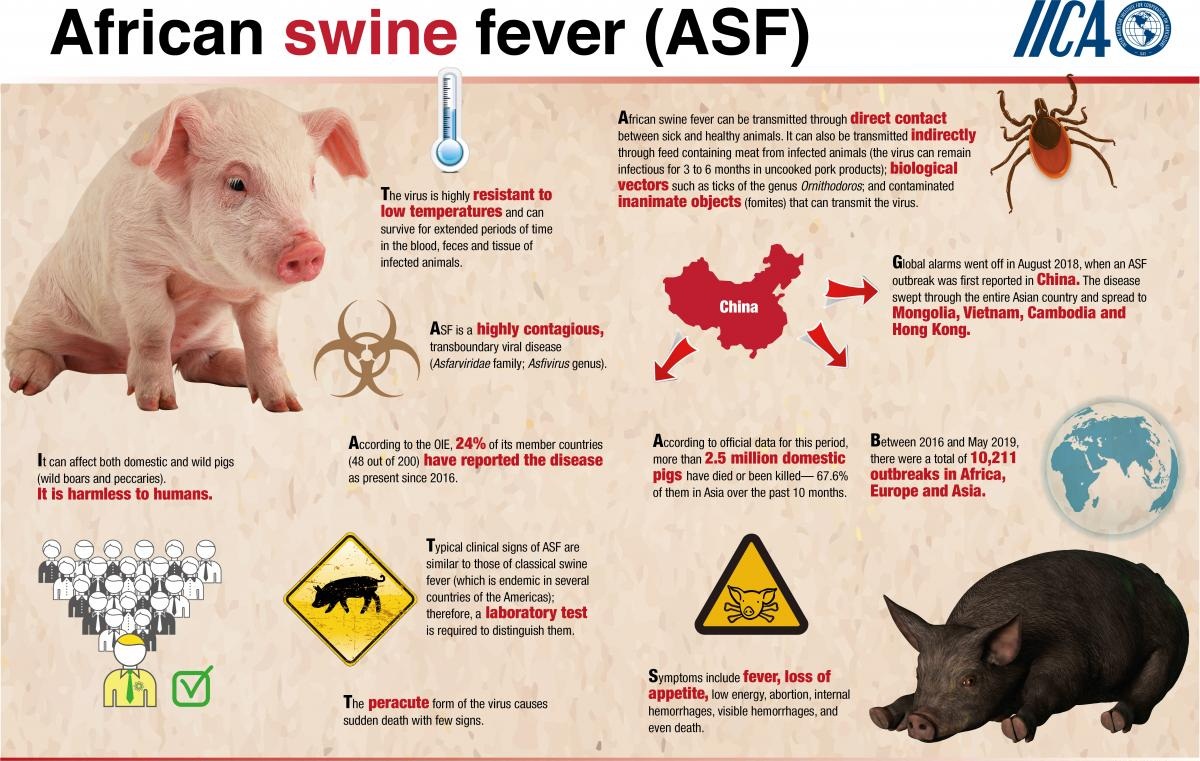Social Justice
Mercy Petition
Why in News
The Tihar Jail administration had asked the convicts in the Nirbhaya case, 2012 to apply for mercy petition before the President within seven days. The order has come after all other legal options have been exhausted by the convicts.
- Even if one of the convicts applies for the mercy plea, it becomes applicable to all.
- For seeking mercy petition, the death sentence by a sessions (trial) court must be confirmed by the High Court.
- The death sentence convict has an option to appeal to the Supreme Court. If the Supreme Court either refuses to hear the appeal or upholds the death sentence, then the convict or his relative can submit a mercy petition to the President of India (Articles 72) or the Governor of the State (161).
Session Court: District court is referred to as sessions court when it exercises its jurisdiction on criminal matters under the Code of Criminal procedure (CrPc).
Grounds of Appeal
- In his/her mercy petition, the person concerned is required to state the grounds upon which he/she requests for the grant of pardon.
- These grounds may not have any value in the eyes of law for exonerating the accused person from the offence, but they may play an important role in the release of the person by the President.
- The grounds, such as the convicted person is the only bread earner of the family or the physical fitness of the convict, his age or even the law was quite harsh or the court by chance committed any mistake or error inadvertently, may be taken into consideration at the time of disposal of the mercy petition.
- Supreme Court in Kehar Singh v Union of India, 1988 case reiterated its stand and held that the grant of pardon by the President is an act of grace and, therefore, cannot be claimed as a matter of right.
Need for the Pardoning Power
- The philosophy underlying the pardon power is that “every civilized country recognizes and provides for the pardoning power as an act of grace and humanity in course of law”.
- The pardoning power is founded on the consideration of public good and is to be exercised on the grounds of public welfare, which is the legitimate objective of all punishments.
Constitutional Provision
- Article 72 provides the pardoning power to the President of India, it says:
- The President shall have the power to grant pardons, reprieves, respites or remissions of punishment or to suspend, remit or commute the sentence of any person convicted of any offence-
- in all cases where the punishment or sentence is by a Court-martial;
- in all cases where the punishment or sentence for an offence against any law relating to a matter to which the executive power of the Union extends;
- in all cases where the sentence is a sentence of death.
- The President shall have the power to grant pardons, reprieves, respites or remissions of punishment or to suspend, remit or commute the sentence of any person convicted of any offence-
- Article 161 provides that the Governor of a State shall have the power to grant pardons, reprieves, respites or remissions of punishment or to suspend, remit or commute the sentence of any person convicted of any offence against any law relating to a matter to which the executive power of the State extends.
- In Dhananjoy Chatterjee alias Dhana v State of West Bengal, 1994 case the Supreme Court has said that “The power under Articles 72 and 161 of the Constitution can be exercised by the Central and State Governments, not by the President or Governor on their own”.
- The advice of the appropriate Government binds the Head of the state.
Pardon: The president can totally absolve/acquit the person for the offence and let him go free like a normal citizen.
Commute: To reduce the type of punishment into a less harsh one. For example Rigorous imprisonment to simple imprisonment.
Remission: To reduce the punishment without changing the nature of the punishment. For example 20 years rigorous imprisonment to 10 years rigorous imprisonment.
Reprieve: A delay is allowed in the execution of a sentence, usually a death sentence for a guilty person to prove his innocence.
Respite: Reduce the degree of punishment looking at specific grounds like pregnancy, old age etc.
Note: A Court-martial is a trial in a military court of a member of the armed forces who are charged with breaking military law.
Difference between the pardoning power of President and Governor
- Death sentence: President can pardon the death sentence but the Governor has no power to pardon the death sentence.
- Court-martial: The President can pardon in case of Court-martial. But the Governor cannot pardon in the court-martial.
- Jurisdiction: President exercises his judicial powers for the punishment which is given under the law made by the Union. Whereas the Governor exercises his judicial powers for the punishment which is given under the law made by the State.
Procedure Involved
- A convict under the sentence of death is allowed to file a mercy petition within a period of seven days after the date on which the Superintendent of Jail informs him about the dismissal of the appeal or special leave to appeal by the Supreme Court.
- The petitions are to be presented to the President of India. The President office seeks the cabinet advice.
- The appeal is examined by the Ministry of Home Affairs and the Ministry before giving recommendations to the President, takes the view of State concerned.
- There is no written procedure to deal with mercy petition.
- Judicial review: President’s pardon/rejection/delay is also subjected to judicial review.
- However, if a court finds that the process of the decision taken by the President under Article 72 was not arbitrary or unreasonable, the decision then cannot be interfered with.
- A curative petition is the last judicial corrective measure which can be pleaded in any judgment or decision passed by the Supreme Court which is normally decided by Judges in-chamber.
Curative petition: The concept of the curative petition was first evolved by the Supreme Court of India in the matter of Rupa Ashok Hurra vs. Ashok Hurra and Anr. (2002) where the question was whether an aggrieved person is entitled to any relief against the final judgement/order of the Supreme Court, after the dismissal of a review petition.
Article 137: It provides that in the matter of laws and rules made under Article 145, the Supreme Court has the power to review any judgement pronounced (or order made) by it. Such a petition needs to be filed within 30 days from the date of judgement or order.
Science & Technology
DNA Bill, 2019
Why in News?
Recently, the scope for violations of privacy in the proposed DNA data bank was discussed by a parliamentary panel on the contentious DNA Technology (Use and Application) Regulation Bill, 2019.
Key Highlights
- The Bill provides for the establishment of a National DNA Data Bank and Regional DNA Data Banks for states.
- DNA laboratories are required to share DNA data with the National and Regional DNA Data Banks.
- Every Data Bank will be required to maintain indices for the following categories of data-
- a crime scene index
- a suspects’ or undertrials’ index
- an offenders’ index
- a missing persons’ index
- an unknown deceased persons’ index
- It aims to store the unique genetic information for administrative purposes.
- It also provides for the establishment of a DNA Regulatory Board, which will supervise the DNA Data Banks and DNA laboratories.
- The Secretary, Department of Biotechnology, will be the ex officio Chairperson of the board and the additional members will be-
- experts in the field of biological sciences
- Director General of the National Investigation Agency
- Director of the Central Bureau of Investigation
Concerns
- Threat of data Hacking: After the incident of malware infection at the Kudankulam Nuclear Power Plant there is a risk of this sensitive data bank being hacked.
- Violation of Human Rights: DNA can play an important role in solving the crimes but it also puts human rights at stake. It can lead to misuse and miscarriages of justice.
- Not Cost Effective: Creating large databases is not a very budget friendly option with limited resources.
- Inadequate Resources: Currently, laboratories are able to assess only one or two samples at a time. This results in delayed investigations.
- Possibility of misuse of DNA samples: Through DNA, not only the identity of a person can be known but also other characteristics like if she/he is suffering from any disease etc. There is a possibility that people having access to DNA samples, blackmail the person who has submitted his/her DNA sample.
- Single Use: Bill envisages the use of a DNA sample for a particular specified purpose only. For any other purpose, the DNA sample will have to be processed again.
Way Forward
- Modernisation of Technology: It will help process around 40 to 50 samples at a time which will in the quick resolution of various cases and thus will strengthen India’s Justice Delivery System.
- Multiple usage: Use of DNA cannot be restricted to a particular purpose. A series of situations may arise that can demand usage of a DNA sample again and again.
- Effective implementation: It is required to ensure the proper storage and usage of DNA bills.
- Securing Human Rights: The authorities need to regulate three broad areas of concern – capacity, training and consent before unleashing the DNA Bill in India.
Indian Polity
15-Point Reforms Charter for Parliament
Why in News?
For effective and better functioning of the Parliament and the State Legislatures, Vice President of India recently introduced a 15 point reform charter.
Key Points
He highlighted various problems that adversely impact the legislative institutions and suggested remedial measures for them.
Issued Charter
- Political Conscience: Call for a new political consciousness amongst legislators to review their roles and responsibilities.
- Quorum: Political parties must ensure attendance of at least 50% of their legislators throughout the proceedings of the Houses by adopting a roster system.
- This was needed in the backdrop of required Quorum (of 10% of the strength of the Houses), which if not met, leads to the adjournment of the House.
- Whip: Review of Whip system which hinders the freedom of expression of the legislators.
- This will allow a reasonable degree of dissent without impacting the stability of the government.
- Anti- Defection: Review of the Anti Defection Law to rectify the areas like incentivizing legislators to resort to actions that invite expulsion from the party besides providing for time-bound disposal of defection cases by the Presiding Officer.
- Department Related Standing Committees: Measures for effective functioning of Department Related Standing Committees like longer tenure (instead of the present one year), promoting specialization, etc were needed.
- Legislative Impact Assessment: A detailed framework for pre and post Legislative Impact Assessment was needed.
- Every legislative proposal must incorporate a detailed account of social, economic, environmental and administrative impact for wider awareness and subsequent legal assessment.
- Voting Preferences: Need for moving away from identity-based voting to that of development-oriented exercise of voting preferences. Role of caste, community, region, and religion in influencing the voting preferences needs to be minimized.
- Responsible Government and Opposition: Need for responsive governments positively acting on the concerns of the opposition and the need for responsible and constructive opposition while resorting to available parliamentary instruments.
- Simultaneous Polls: Building consensus on the proposal of simultaneous polls to allow unrestricted governance.
- Reservation of Women: Enacting for reservation of women in legislatures.
- Rules and Regulations: Making rules that automatically take action against erring members in case of interruptions and disruptions. Need for timely and effective action against legislators for non-ethical conduct.
- Transparency & Accountability: Regular publication of reports by the Secretariats of Legislatures on the attendance of Members and their participation in debates.
- Addressing the concern of a rising number of legislators with criminal records.
- Setting up of special courts for time-bound adjudication of criminal complaints against legislators.
- A minimum number of sittings for both the Houses of Parliament and State Legislatures per year need to be appropriately prescribed.
Indian Polity
UTs: J&K and Ladakh
Why in News?
- Radha Krishna Mathur has been appointed as the first Lieutenant-Governor (L-G) of Ladakh and Girish Chandra Murmu, that of Jammu & Kashmir (J&K).
Background
- This move has come after the Centre scrapped provisions of Article 370 that had given Jammu and Kashmir special status and split it into two Union territories (UTs) under the J&K Reorganisation Act of 2019.
- This is the first time that a state has been divided into UTs.
- Kargil and Leh districts form Ladakh, while the rest of the region constitutes the Union territory of Jammu and Kashmir.
- Now, India has 9 UTs and 28 states.
Current Status
- The two new UTs, Ladakh and J&K, officially came into existence on the 144th birth anniversary of Sardar Vallabhbhai Patel (31st October 2019), who is credited for the merger of over 560 princely states into the Union of India.
- With this, President's rule imposed in undivided Jammu and Kashmir in June 2018 stands revoked.
- The flag and constitution of Jammu and Kashmir, as well as the Ranbir Penal Code (RPC), cease to exist, with the Indian Penal Code (IPC) now extending to both UTs.
- The Union Territory of J&K will have a 114-member elected Assembly and a Chief Minister whereas the Union territory of Ladakh will be controlled directly by the L-G (i.e. without an Assembly).
Administration of UTs
- Articles 239 to 241 in Part VIII of the Constitution deal with the union territories.
- Every union territory is administered by the President acting through an administrator appointed by him.
- The President can specify the designation of an administrator; it may be Lieutenant Governor or Chief Commissioner or Administrator.
- The Parliament can make laws on any subject of the three lists (i.e. Union, State and Concurrent) for the union territories.
Governance
Members of European Parliament Visit Kashmir
Why in News?
- A delegation of European Union Members of Parliament (MEPs), comprising 27 Members of the European Parliament (MEPs) from Italy, Britain, France, Germany, Czech Republic, and Poland, visited Srinagar on 29th October, nearly three months after the revocation of Article 370, to see the situation there.
- The non-profit organizations, Women’s Economic and Social Think Tank (WESTT) and the International Institute for Non-Aligned Studies (IINS) invited and sponsored, this visit to Kashmir.
- The was undertaken just two days before the state of Jammu and Kashmir was divided into two Union territories (October 31st, 2019) of Jammu & Kashmir and Ladakh.
Significance of the Visit
- As per the government, the visit to Srinagar acquainted the MEPs with the development priorities of the region.
- The decision to allow the MEPs to visit J&K marked a significant turnaround in the government's policy after it faced considerable criticism in the EU and in the US over the Article 370 move.
- The Indian government presented the EU lawmakers' visit as an attempt to let the outside world see the ground situation in Kashmir, which Delhi has labelled as normal.
- The visit also gave a better understanding of the cultural and religious diversity of the region of Jammu, Kashmir, and Ladakh; apart from giving them a clear view of the development and governance priorities of the region.
Concerns
- This visit raises concern as access to J&K is not available to national political leaders, journalists, and international diplomats.
- The group comprises of MEPs, majority of whom belong to far-right, anti-immigration parties in the European Union.
- The European Union (EU) Embassy in Delhi has clarified that the MEPs were in India in their “personal capacity”, and not as part of an official delegation.
- Since the European Parliament and the European Union hierarchy has not been involved, this raises some diplomatic doubts.
Indian Economy
Core Sector Output Falls by 5.2%
Why in News?
- The output of eight Core Infrastructure Industries has contracted by 5.2% in September (2019), indicating the severity of the economic slowdown.
- Except for fertilizers (output improved by 5.4% in September), the other seven infrastructure industries experienced a contraction.
- The coal sector is the worst performer on account of an extended monsoon, a surge in renewable energy supply and labour issues at state-run Coal India Ltd.
- The eight Core Industries in decreasing order of their weightage: Refinery Products> Electricity> Steel> Coal> Crude Oil> Natural Gas> Cement> Fertilizers.
| Industry | Weight (In percentage) |
| Petroleum & Refinery production | 28.04 |
| Electricity generation | 19.85 |
| Steel production | 17.92 |
| Coal production | 10.33 |
| Crude Oil production | 8.98 |
| Natural Gas production | 6.88 |
| Cement production | 5.37 |
| Fertilizers production | 2.63 |
Governance
EIU’s Financial Inclusion Report
Why in News?
According to the Economist Intelligence Unit’s 2019 Global Microscope on Financial Inclusion report, India (ranked at 5th position) is among the top nations with the most conducive environment for financial inclusion.
- The Global Microscope assesses the enabling environment for financial inclusion across 5 categories and 55 countries.
- It covers five domains:
- Government and Policy Support
- Stability and Integrity
- Products and Outlets
- Consumer Protection
- Infrastructure
- The 2019 edition featured 11 new gender-focused indicators that measured financial inclusion for both women and men.
- EIU is the research and analysis division of The Economist Group, the sister company to The Economist newspaper. It has its office in London, UK.
Key Findings
- The overall environment for financial inclusion has improved globally with India, Colombia, Peru, Uruguay and Mexico having the most favourable conditions for inclusive finance.
- However, only one-third of countries include a gender approach in their financial inclusion strategies, and even fewer have set clear, gender-related goals.
Financial Inclusion and India
- The Reserve Bank of India (RBI) has prepared a draft National Strategy for Financial Inclusion to deepen financial services’ coverage in the country. The strategy is expected to be finalised in 2019 and will cover a five-year period.
- The RBI has set up a high-level committee to review the existing status of digitisation and devise a medium-term strategy for increasing digital payments.
- In August 2019, the RBI released the Enabling Framework for Regulatory Sandbox (RS), which created the basis for a regulatory sandbox that allows fintech start-ups to live-test innovative products and services.
Indian Heritage & Culture
Gottiprolu- An Early Trade Centre of Andhra Pradesh
Why in News?
- Excavation by Archaeological Survey of India at Gottiprolu near Nellore (now renamed as Sri Potti Sriramulu) district, Andhra Pradesh has discovered the remains of a huge settlement.
Key Points
- The site lies on the right bank of a distributary of river Swarnamukhi.
- The proximity of the site (at southern coastal location) to the seacoast suggests that the site could have served as a strategic settlement involved in maritime trade.
- Detailed topographical studies have identified an early historic settlement surrounded by a fortification and the possibility of a moat encircling it.
Discovered Items
- Sculpture- Life-size buried Vishnu sculpture with following specifications:
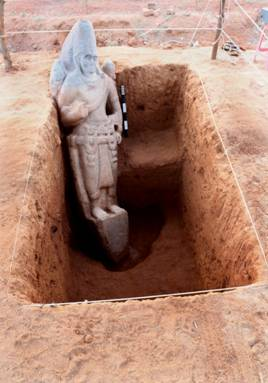
- Four-armed Vishnu standing over a pedestal,
- Carrying chakra and conch in his upper right and left hands respectively.
- The lower right is in bestowing boon position and the left hand in ‘Katihastha’ (resting on the hip) posture.
- Features like the elaborate headgear, thick holy thread, and decorative drapery dates it back to the Pallava period (c. 8th cent. AD).
- Pottery- conical jars that are considered to be imitated variety of Roman Amphorae jars (ancient Greek or Roman jar/ jug used to transport liquid commodities).
- These settlements could have been an important trade centre due to the presence of imitated amphorae wares.
- The conical jars of broken terracotta pipes found fitted into one another revealed about the civic amenities and drainage system pattern maintained by the occupants at the site.
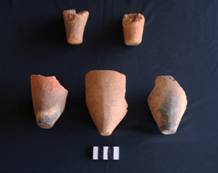
- The ceramic assemblage of the site consisted of fine quality black and redwares collected from the conical jars, russet coated ware, etc.
- Brick-built structures in different sizes and forms like elliptical, circular, rectangular, and curvilinear pattern.
- The size of bricks can be compared to those found in the Satavahana/Ikshvaku period structures in the Krishna valley viz. Amaravati and Nagarjunakonda.
- This dates back the site to the 2nd century to 1st century BC.
- Molded female terracotta figurine- with two hands lifted upwards.
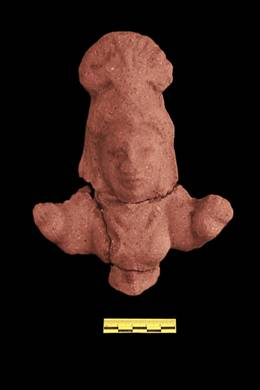
- Varied stone tools of Palaeolithic and Neolithic periods were also found which suggest that prehistoric people also occupied this area.
- Other major retrieved antiquities unearthed are copper and lead coins, iron spearhead, stone celts, terracotta beads, ear stud in semi-precious stone and hopscotches.
- Important Remnants of the Site: fortified early historic settlement at Puduru, Sunbrahmanya temple at Mallam, unique rock-cut laterite stepped well at Yakasiri, Vishnu temple at Tirumuru.
Important Facts For Prelims
African Swine Fever
Why in News?
China is witnessing rise in pork prices because of the rampant spread of African Swine Fever (ASF). The country is the world’s largest pork (meat from a pig) producer.
About ASF
- ASF is a highly contagious and fatal animal disease that infects domestic and wild pigs. It leads to an acute form of hemorrhagic fever. It was first detected in Africa in the 1920s.
- The mortality is close to 100%, and since the fever has no cure, the only way to stop its spread is by culling the animals.
- ASF is not a threat to human beings since it only spreads from animals to other animals.
Key Points
- Historically, outbreaks have been reported in Africa and parts of Europe, South America, and the Caribbean.
- However, more recently (since 2007), the disease has been reported in multiple countries across Africa, Asia and Europe, in both domestic and wild pigs.
- ASF is a disease listed in the World Organisation for Animal Health (OIE) Terrestrial Animal Health Code and thus, reported to the OIE.
World Organisation for Animal Health
- OIE is an intergovernmental organisation responsible for improving animal health worldwide.
- In 2018, it had a total of 182 Member Countries. India is one of the member countries.
- OIE develops normative documents relating to rules that Member Countries can use to protect themselves from the introduction of diseases and pathogens. One of them is the Terrestrial Animal Health Code.
- OIE standards are recognised by the World Trade Organization as reference international sanitary rules.
- It is headquartered in Paris, France.
Important Facts For Prelims
UNESCO's Network of Creative Cities
Why in News?
- United Nations Educational, Scientific and Cultural Organization (UNESCO) has included Mumbai and Hyderabad in its network of 'Creative Cities' among the 66 cities selected on the occasion of World Cities Day 2019 (31st October).
- With the addition of 66 new cities, the UNESCO Creative Cities Network counts a total of 246 cities.
- Mumbai has been designated as Creative City of Films and Hyderabad as a Creative City of Gastronomy.
- Earlier, Indian cities like Chennai and Varanasi have been included in UNESCO Cities of Music while Jaipur has been included in the City of Crafts and Folk Arts.
Significance
- By joining the UNESCO Creative Cities Network (UCCN), the cities pledge to share best practices and develop partnerships involving public and private sectors as well as civil society to strengthen the creation, production, and distribution of cultural activities.
UNESCO Creative Cities Network (UCCN)
- It was created in 2004.
- Currently (2019), 246 cities make up this network which aims towards a common objective of placing creativity and cultural industries at the heart of their development plans at the local level and cooperating actively at the international level.
- The UNESCO Creative Cities aims to achieve Sustainable Development Goals through innovative thinking and action.
- Also, cities are championing sustainable development actions that directly benefit communities at the urban level.
- Sustainable Development Goal 11 aims for Sustainable Cities and Communities.
- The network covers seven creative fields: crafts and folk arts, media arts, film, design, gastronomy, literature and music.
World Cities Day 2019
- The United Nations General Assembly has designated the 31st of October as World Cities Day.
- The theme for World Cities Day,2019 is, “Changing the world: innovations and a better life for future generations”.
Important Facts For Prelims
Pegasus
Why in News?
WhatsApp recently filed a lawsuit in the U.S court against Israel's NSO Group, alleging that the firm was incorporating cyber-attacks on the application by infecting mobile devices with malicious software.
Key Points
- Members spread across at least 20 countries in Africa, Asia, Europe, the Middle East, and North America were affected by the spyware.
- Targeted users in India included journalists, human rights activists, political dissidents, lawyers, and diplomats.
- The spyware named ‘Pegasus’ is developed by the Israeli cyber arms firm NSO in 2016.
- Pegasus exploited a weakness in WhatsApp’s video-call feature that allowed attackers to inject the spyware on to phones simply by ringing the number of targets' device. It enters the phone even if the call is not answered.
- Once Pegasus is installed, it can access the targeted users’ private data, including passwords, contact lists, calendar events, text messages, and live voice calls from popular mobile messaging apps.
- It can also turn the phone into a spying device by switching on its camera or microphone.

